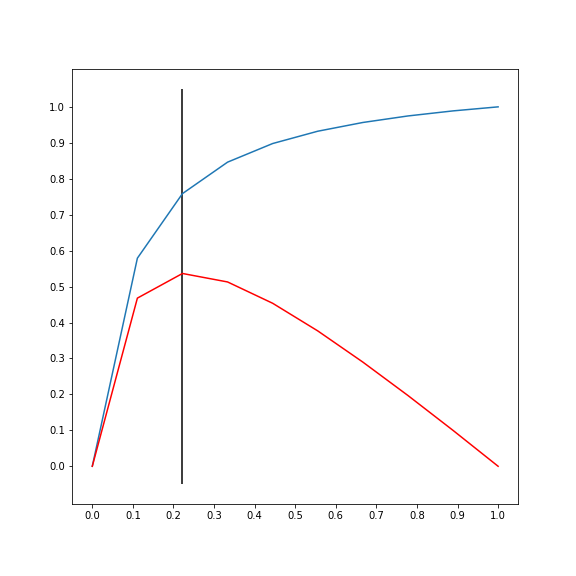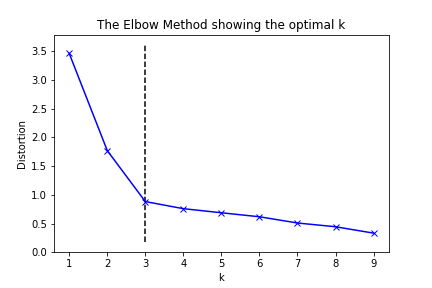This repository is an attempt to implement the kneedle algorithm, published here. Given a set of x and y values, kneed will return the knee point of the function. The knee point is the point of maximum curvature.
To install use pip:
$ pip install kneed
Or clone the repo:
$ git clone https://github.com/arvkevi/kneed.git
$ python setup.py install
Tested with Python 3.5 and 3.6
from kneed import DataGenerator, KneeLocator
DG = DataGenerator()
x,y = DG.figure2()
print(x,y)
(array([ 0. , 0.11111111, 0.22222222, 0.33333333, 0.44444444,
0.55555556, 0.66666667, 0.77777778, 0.88888889, 1. ]),
array([-5. , 0.26315789, 1.89655172, 2.69230769, 3.16326531,
3.47457627, 3.69565217, 3.86075949, 3.98876404, 4.09090909]))
kneedle = KneeLocator(x, y, S=1.0, curve='concave', direction='increasing')
kneedle.knee
0.22222222222222221
kneedle.plot_knee_normalized()import numpy as np
knees = []
for i in range(5000):
x,y = DG.noisy_gaussian(mu=50, sigma=10, N=1000)
kneedle = KneeLocator(x, y, curve='concave', direction='increasing')
knees.append(kneedle.knee)
np.mean(knees)
60.921051806064931See the tutorial in the notebooks folder, this can be achieved with the direction keyword argument:
KneeLocator(x, y, curve='convex', direction='decreasing')Contributing
I welcome contibutions, if you have suggestions or would like to make improvements please submit an issue or pull request.
Finding a “Kneedle” in a Haystack: Detecting Knee Points in System Behavior Ville Satopa † , Jeannie Albrecht† , David Irwin‡ , and Barath Raghavan§ †Williams College, Williamstown, MA ‡University of Massachusetts Amherst, Amherst, MA § International Computer Science Institute, Berkeley, CA


